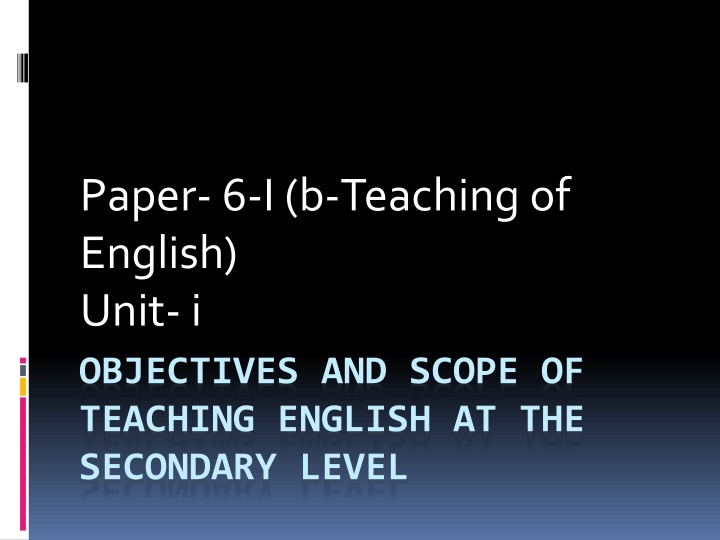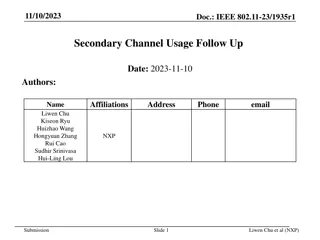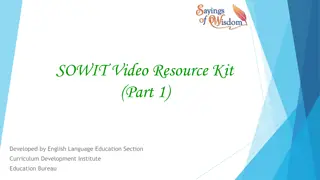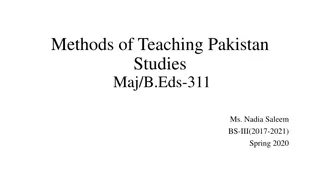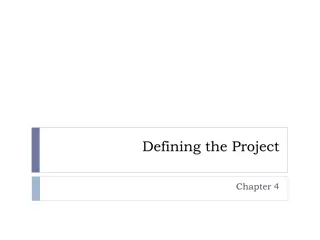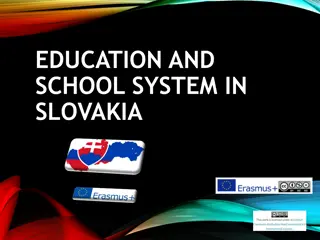Objectives and Scope of Teaching English at Secondary Level
The success of teaching English at the secondary level hinges on the proper fixation of aims and objectives by the teacher. Objectives include enabling students to listen, speak, read, and write English effectively through various methods and practices. Emphasis is placed on oral teaching, pronunciation, drills, conversation organization, vocabulary drilling, and feedback mechanisms.
Download Presentation

Please find below an Image/Link to download the presentation.
The content on the website is provided AS IS for your information and personal use only. It may not be sold, licensed, or shared on other websites without obtaining consent from the author.If you encounter any issues during the download, it is possible that the publisher has removed the file from their server.
You are allowed to download the files provided on this website for personal or commercial use, subject to the condition that they are used lawfully. All files are the property of their respective owners.
The content on the website is provided AS IS for your information and personal use only. It may not be sold, licensed, or shared on other websites without obtaining consent from the author.
E N D
Presentation Transcript
Paper- 6-I (b-Teaching of English) Unit- i OBJECTIVES AND SCOPE OF TEACHING ENGLISH AT THE SECONDARY LEVEL
Objectives of teaching English The success of the teaching process depends upon how far the teacher fixes up the aims and objectives of teaching properly. Aims and objectives of the language teaching behavioural changes in the students. Without the knowledge of aims and objectives a teacher like a passenger who does not know where he want to go and can t teach a lesson efficiently.
To enable the students to understand English when spoken (listening) To enable the students to speak English correctly (speaking) To enable the students to read English with proper pauses and stress (reading) To enable the students to write English correctly (writing)
1. To enable the students to understand English when spoken Oral way teaching Use of play way method. Use of direct method. Uses of tape recorder, lingua phone, video, radio etc. The knowledge of the sound system should be given to the pupils
2. To enable the students to speak English correctly Students must be given more opportunities to speak English Students should be asked questions to answer Drills and practices Practice of correct pronunciation Organization of conversation, debates and language game Teacher s speaking English must be good model to the students.
3. To enable the students to read English with proper pauses and stress Teacher should read any topic properly and correctly as his reading serves as a model to the students. Various types of drilling of vocabulary should be given in the class. Teacher should give the pupils the knowledge of the pronunciation, stress and intonation which will help them to read properly and correctly The teacher should write the vocabulary and sentences on the black board and ask them to read. Students should be given more opportunities to read English in the class and the teacher should provide then text books, charts, substitution tables etc. Sufficient feedback should be provided by using tape recorder in the classroom
4. To enable the students to write English correctly At the outset the teacher should teach the students the shapes of different letters. The teacher handwriting must be neat and correct as the students imitate the teacher. Enough practice of writing letters, simple words sentences should be given suffiently according to the stage. The teacher may provide a small handbook to the pupils to overwrite the word and sentences. The teacher should make use of the blackboard and directs the pupils to look and write on their notebooks. Sufficient feedback should be given regarding the correct use of vocabulary, tense and sentence pattern as writing includes correctness in usage.
Language Proficiency: To develop students' proficiency in reading, writing, speaking, and listening in English, enabling them to express themselves effectively and comprehend a wide range of texts. Communication Skills: To enhance students' ability to communicate clearly and coherently, fostering effective interpersonal, professional, and academic communication. Literacy and Reading Comprehension: To improve students' reading comprehension skills, critical thinking, and analysis of various types of texts, such as literature, articles, and informational materials.
Writing Proficiency: To teach students to write with clarity, coherence, and organization, enabling them to create essays, reports, narratives, and other forms of written communication. Vocabulary Expansion: To expand students' vocabulary and help them use words effectively, fostering better communication and writing. Grammar and Syntax: To teach the rules of grammar and syntax, enabling students to construct clear and grammatically correct sentences. Cultural Awareness: To promote an understanding of the culture, history, and values associated with the English language, as well as the ability to navigate diverse cultural contexts.
Critical Thinking and Analysis: To develop critical thinking skills by analyzing literature, arguments, and various forms of media, fostering the ability to evaluate information critically. Creativity and Expressiveness: To encourage students to use English as a medium for creative expression through poetry, creative writing, and other forms of artistic communication. Digital Literacy: To equip students with the skills to navigate and evaluate digital texts and media, promoting responsible online communication and research.
Global Communication: To prepare students for effective communication in a global context, where English is often used as a lingua franca for international business and diplomacy. Career Opportunities: To provide students with the language skills necessary for pursuing higher education and various career paths, including those that require proficiency in English. Empowering Students: To empower students to express their thoughts, ideas, and concerns in English, enabling them to participate actively in society and advocate for themselves. Cultural and Social Integration: To help non-native English speakers integrate into English-speaking communities and engage with the broader world.
Personal Development: To foster personal growth and confidence in students, enabling them to become more self-assured and effective communicators. These objectives aim to provide students with a well- rounded English education that goes beyond language skills and encompasses broader personal and cultural development. The specific objectives may vary depending on the educational system, the students' age and language proficiency, and the educational goals of the institution.
